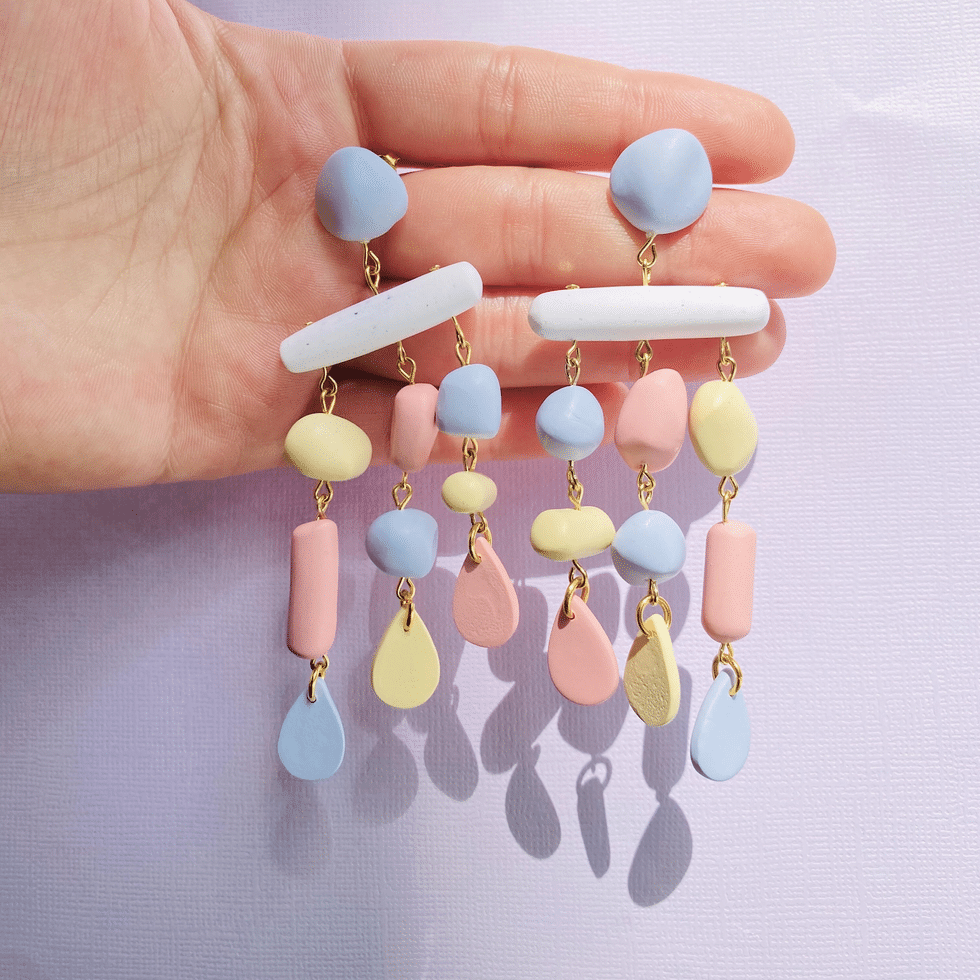Meet CAROLAS: Miami Inspired Earring Designs
CAROLAS is a Miami-based small business owned by two powerful mujeres, Carolina Garcia and Carolina Hidalgo, who work to add some serious sass to your outfit with their handmade polymer clay jewelry.

We all love a good pair of earrings – and what better way to add some flair to your style than to don a beautifully handmade pair? Enter CAROLAS, a Miami-based small business owned by two powerful mujeres, Carolina Garcia and Carolina Hidalgo, who work to add some serious sass to your outfit with their handmade polymer clay jewelry. We had an opportunity to talk to Carolina Garcia about the creative process of making clay earrings and what it’s like to own a business.
These answers have been lightly edited for clarity and flow.
¡Hola, Carolina! Tell us a little about yourself and your business, CAROLAS.
CAROLAS is a handcrafted jewelry brand owned by myself, Carolina Garcia and my friend, Carolina Hidalgo. All of our products are designed and carefully handcrafted by us two. Our jewelry is made out of polymer clay; a versatile, fun, and lightweight material. Carolina and I are both Cuban, born and raised in Havana. We emigrated to the United States in our early twenties, about 7 years ago. Like many other immigrants, we’ve gone through a tough but beautiful process of adaptation—a process full of growth, self-development, and many helping hands. Our business is a reflection of those things in many ways.

Give us some background: how did you get started, and what inspired you to start your business?
Our artisan work started in 2019 when a dear friend introduced us to polymer clay and polymer clay jewelry. We started making jewelry as a hobby, a hobby to which we soon became almost addicted—our creativity connected with that medium in a way none of us had experienced before. Our friends, family, and coworkers encouraged us to monetize that hobby. We opened an Instagram account and started sharing our work with other people, without knowing we would later call it a business. We became intentional about growing and maintaining that business after some time, but initially, we had no idea what we were creating.
Your designs are so colorful and unique, what inspires them?
Our inspiration comes from many different sources. We feel particularly attracted to bright and colorful things. It can be the pastel colors of Miami Beach Art Deco, an eclectic apartment design, our local thrift shop, a Mondrian painting, the flower section at a grocery store, seashells; you name it. Our style is always changing and evolving while our love for fun and colorful jewelry remains untouched.

We know CAROLAS is a part-time business for you two; how do you balance running a business, having full-time jobs, and self-care?
It is extremely challenging to manage such a tight schedule. It’s easy to forget about the importance of self-care when there’s so much to do, but it’s definitely an essential part of the balance needed. We take it one day at a time, one task at a time. Always keeping in mind that our business is a source of happiness and fulfillment to our lives, so whenever it gets overwhelming, we take a step back and take the time to reaffirm that.
We try to set realistic expectations and be ok with not accomplishing some of our goals from time to time. In other words, we enjoy the ride and understand our pace is just fine. We make sure we allow ourselves to have some downtime and time to spend with our loved ones, meditate, etc. One thing that has helped me a lot in balancing my workload is to listen to podcasts while I create; it helps me get out of my own head while being productive.
What is some advice you can offer aspiring creatives/entrepreneurs?
As perfectionists in recovery, I think some of the best advice we can give is to not let the pursuit of perfection stop you from doing. The best way to learn is by doing. If you get it wrong, that’s fine; now you know what not to do. Start somewhere, don’t wait until you have it all figured out to start that business, that page, or that product. Because guess what? You will never have it all figured out. No one does. Do your homework and fall in love with the learning process, YOUR learning process.

Where can we follow you and your business adventures?
You can follow us on Instagram at @carolascolors, expect lots of colors and occasional videos of our cats! You can shop for our designs on our website, www.carolasclay.com.
This interview is part of the Luz Media’s Alpha Latina: Small Business Saturday series. This series highlights the accomplishments of Alpha Latinas making a difference in their communities through their small businesses. Interested in being featured? Contact Us..




